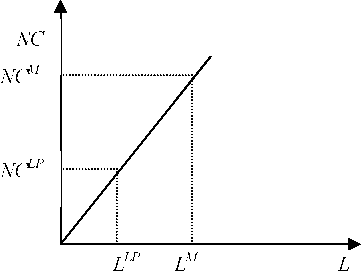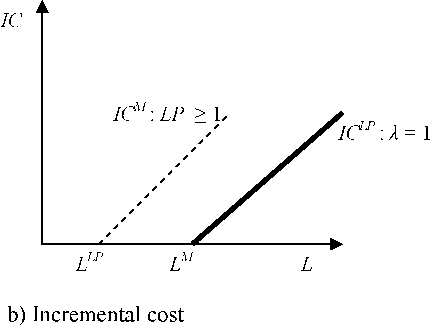
a) Net stand alone cost

Figure 3. Cost curves for public goods
3. An agricultural model with public goods
To quantify costs of providing public goods as well as cost complementarities, we need to elaborate
the basic principles put forward in the previous section into a richer model. As a point of departure, we
use a sector model for the agricultural sector in Norway. This model is extended by incorporating a
willingness to pay function for landscape preservation, and by adding a production function for food
security.
3.1 The core model
The model, which base year is 1998, covers the most important commodities produced by the
Norwegian agricultural sector, in all 13 final and 8 intermediary product aggregates. Of the final
products, 11 are related to animals while 3 are related to agricultural crops.
Inputs needed to produce agricultural products are land, labor (family and hired), capital
(machinery and buildings), concentrated feed, and an aggregate of other goods. Furthermore, we
distinguish between tilled land (T) and grazing on arable land and pastures (G), so
G + T = L ≤ L.
Domestic supply is represented by about 400 “model farms”. Each model farm is
characterized by Leontief technology, i.e. with fixed input and output coefficients. However,
production can take place on small farms or larger more productive farms. Consequently, there is an
element of economies of scale in the model.
The country is divided into nine regions, each with limited supply of different grades of land.
This introduces an element of diseconomies of scale because, ceteris paribus, production will first take
place in the best regions.
Domestic demand for final products is represented by linear demand functions. Economic
surplus (consumer’s surplus plus producer’s surplus) of the agricultural sector is maximized, subject to
demand and supply relationships, policy instruments and imposed restrictions. The solution to the model
is found as the prices and quantities that give equilibrium in each market. A broader description of the
model is offered in the appendix.
3.2 Landscape preservation
Landscape preservation is taken into account by adding the willingness to pay function (5)
More intriguing information
1. Globalization and the benefits of trade2. The name is absent
3. TRADE NEGOTIATIONS AND THE FUTURE OF AMERICAN AGRICULTURE
4. The name is absent
5. The name is absent
6. KNOWLEDGE EVOLUTION
7. Towards Teaching a Robot to Count Objects
8. Strategic monetary policy in a monetary union with non-atomistic wage setters
9. Plasmid-Encoded Multidrug Resistance of Salmonella typhi and some Enteric Bacteria in and around Kolkata, India: A Preliminary Study
10. The name is absent